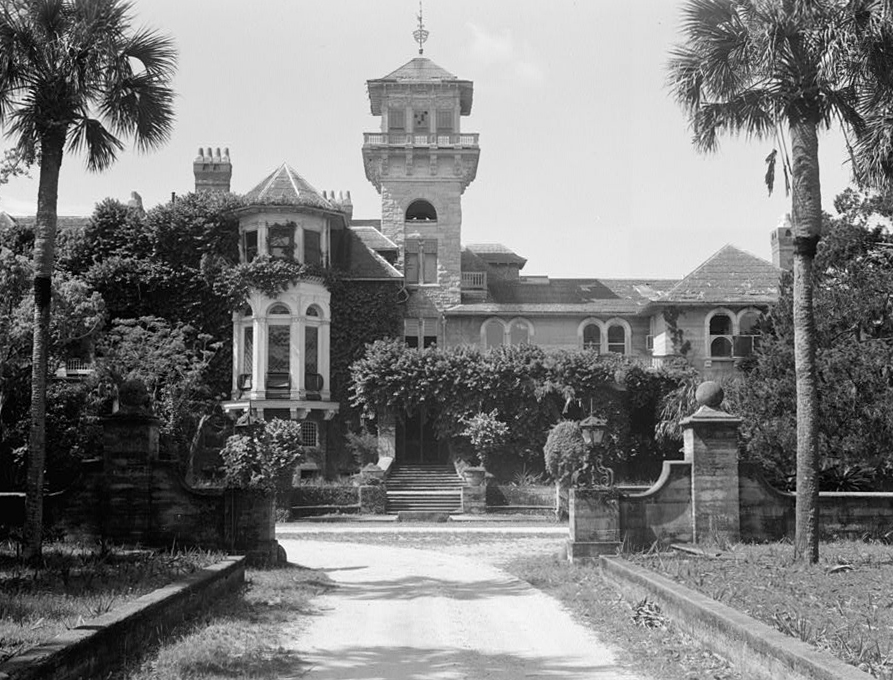Dungeness Plantation: Now and Then
 Dungeness Plantation in 1958. National Park Service photo in the public domain.
Dungeness Plantation in 1958. National Park Service photo in the public domain.Dungeness Plantation was begun by Major General Nathanael Greene, hero of the American Revolution in the southern states, in 1783. He died on Cumberland Island, Georgia in 1786. His widow Catherine continued the construction and operation of the plantation in his absence. Two decades later, Greene's fellow General "Light Horse" Harry Lee stopped in at Cumberland Island on his way home to Virginia from the West Indies in an attempt to recover his health. He never made it - the Major General, Governor of Virginia, and father of Robert E. Lee died in Catherine's care at Dungeness Plantation on March 25, 1818.
The Greenes and their dependents lived at Dungeness until the American Civil War. After two decades of dormancy, the property was purchased by the Carnegies and used as their winter estate, beginning in 1890. The Carnegies' Dungeness outdid the Jekyll Island Club on the next island north. At Jekyll Island many of the nation's wealthiest families - Fords, Rockefellers, Goodyears, and Disneys - wintered on the Georgia sea coast after summering in Newport, Rhode Island. But for the Carnegies, it was not enough to own just a "cottage" on Jekyll. No, they owned nearly the entire island at Cumberland.
The years wore on, and the Roaring Twenties marked the high-water point of Dungeness and the Jekyll Island Club. The personal income tax made multiple estates unaffordable, the Great Depression crushed net worths of wealthy families, and finally the Second World War made travel by yacht between summer estates in Rhode Island and winter estates in Georgia impractical. Amid a land dispute between descendants of the Carnegie family, a mysterious fire burned the manor house in 1959. The cause was never proven, but arson was suspected.
Cumberland Island has been owned by the National Park Service since the 1970s. Ashes to ashes and dust to dust, the ruins of Dungeness Plantation are slowly surrendering to time and the elements.

ISO 64
1/200 sec
f/2.8
9 mm
0 comments:
Post a Comment